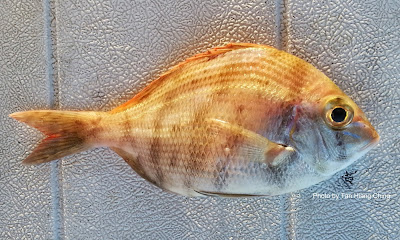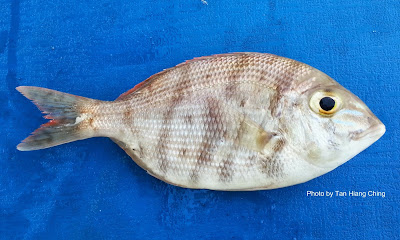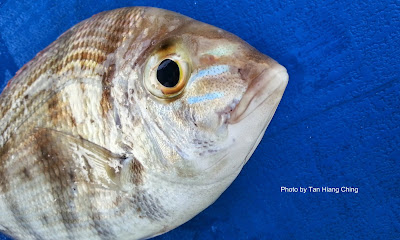Emperors (Large-eye Bream)
Overview
Emperors, also known as scavengers, belong to the Lethrinidae family and are found primarily in the tropical waters of the Indo-Pacific and Indian Oceans. These fish are highly esteemed for their quality as food fish.As bottom-feeding carnivores, emperors primarily prey on invertebrates and small fish. Some species possess molariform teeth that help them consume hard-shelled invertebrates such as mollusks and crabs. Emperors can be solitary or form schools, but they are generally non-territorial. They often aggregate in large numbers for pelagic spawning and have large eyes that enable them to feed effectively at night.
The Lethrinidae family encompasses 5 genera and at least 41 species worldwide. This webpage covers all the genera in Lethrinidae family except those of Letrinus genus which have a distinct naked cheek.
Common Large-eye Bream Species List
English Name: Yellowsnout Large-eye Bream
Malay Name | Nama Melayu Malaysia: Kapas-kapas Laut, Mempasir Mutiara
Thai Name | ชื่อสามัญภาษาไทย: ปลาอีคุด (Plā xī khud)
Main Identification Features: Presence of a prominent blue-edged, yellow band from front of eye to above upper lip, encompassing nostrils; cheek yellowish with 3 or 4 oblique, blue bands.
Size: Maximum total length about 35 cm; commonly to 30 cm.
Habitat and Ecology: Sand, mud and rubble, 20 to 80 m depth. Feeds mainly on small bottom-living gastropod molluscs.



English Name: Blue-lined Large-eye Bream, Robinson's Seabream
Malay Name | Nama Melayu Malaysia: Kapas-kapas Laut, Bebara, Bara, Mempasir Garis Biru
Thai Name | ชื่อสามัญภาษาไทย: ปลาตะมะแก้ว (Plā ta ma kæ̂w)
Local Hokkien: Ping Pong
Main Identification Features: Distinct scales and strong spines on their fins. Wavy blue lines across snout and cheek.
Size: Maximum total length about 80 cm; commonly to 70 cm.
Habitat and Ecology: Sand, rubble and rocky bottoms, at 20 to 170 m depth, but usually at 50 to 100 m. Feeds mainly on bottom-living invertebrates and small fishes.
